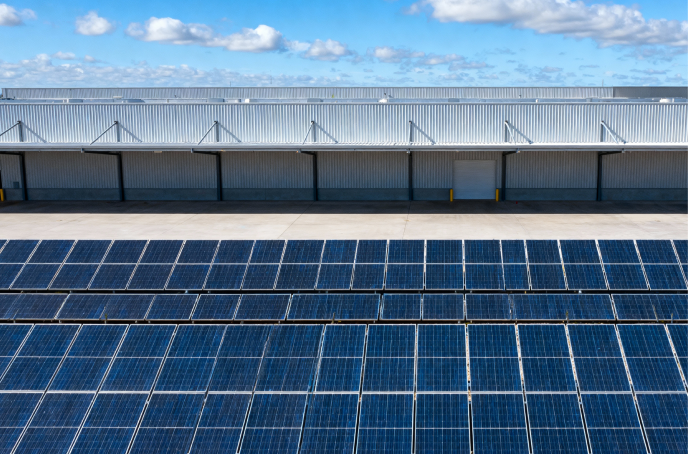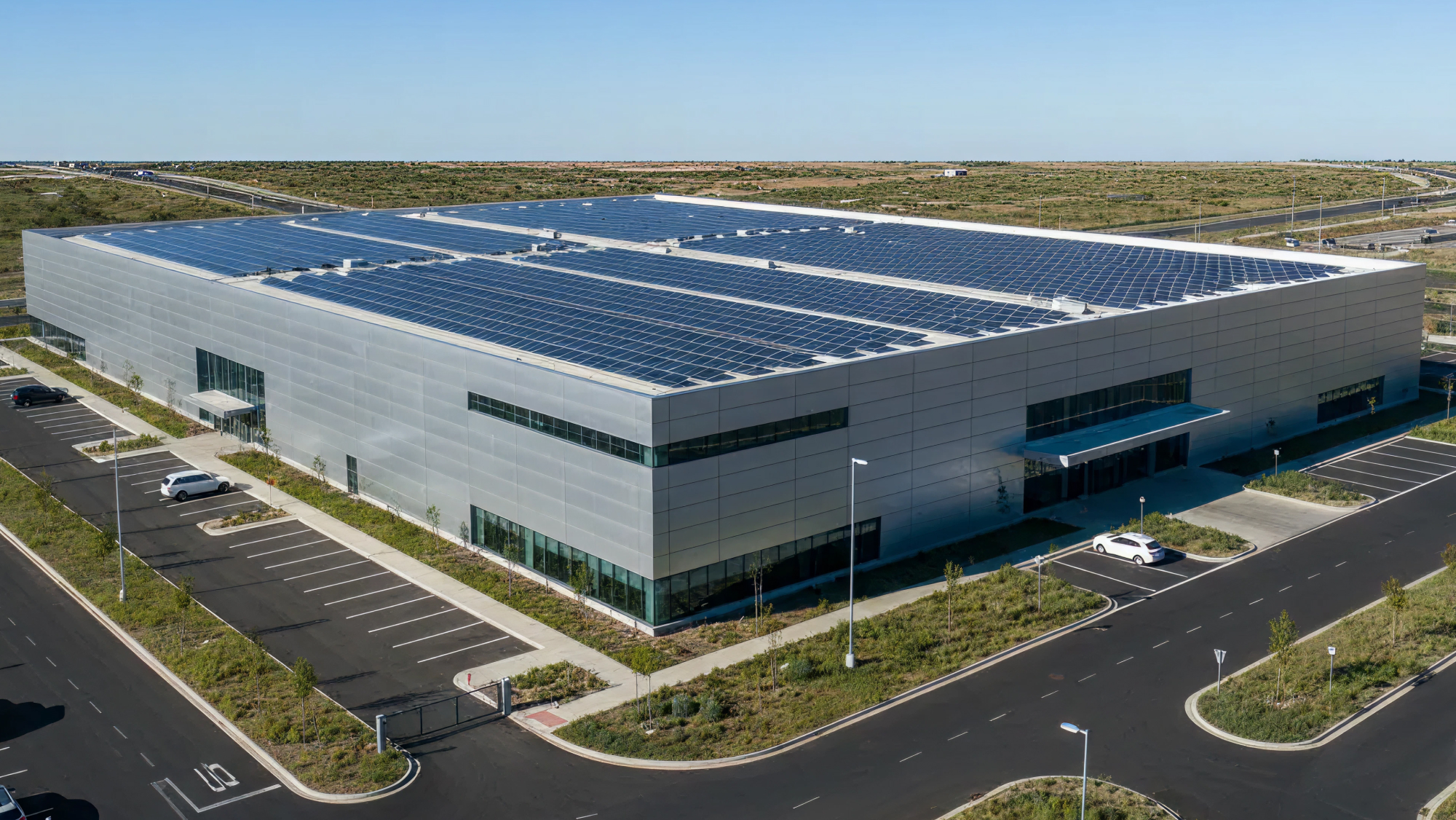3 options for financing energy projects

More businesses are moving to solar power
By now, it's become common knowledge that big corporations like the cost savings of solar power. While Apple, Target, and Walmart are frequently cited examples of clean energy adoption, most non-residential solar energy is being generated by municipal utilities and small to mid-sized enterprises.
Beyond allowing businesses and commercial property owners to significantly reduce their operational costs, solar energy adoption is also helping companies meet social impact initiatives. This includes mandates like Net Zero, which require industries worldwide to work collectively to reduce greenhouse gas emissions to net zero by 2050.
As impact investing gains more ground, businesses not exploring clean energy may find themselves at a fundraising disadvantage. Choosing clean energy is becoming a savvy move that satisfies multiple priorities required for a company to thrive—from lower operational costs and increasing commercial asset value to garnering public goodwill.
This article will go over three common ways businesses like yours choose to finance commercial Net Zero projects.
What are the differences between commercial and residential solar financing?
There are differences between commercial and residential solar financing due to the size and complexity variations of the projects. Commercial solar projects are intricate, more significant, with a greater number of stakeholders. Residential projects involve the installer, property owner and perhaps a single end-user.
The size of commercial solar projects is 75kW or greater, but residential projects average 7kW. The larger size of commercial projects increases their dollar value substantially.
Businesses are navigating solar installation coupled with financing. For years, the commercial sector was evenly split with power purchase agreements coupled with direct ownership, but things are changing due to easier and more affordable/beneficial solar financing options. The popularity of solar loans and the varied options have created a great deal of opportunity for businesses to finally embrace solar.
3 common commercial solar funding options
The cost of solar energy equipment has fallen nearly 70% over the past decade, making the technology far more attractive and cost-effective to install. Still, a solar project's size and scope may necessitate special financing to offset upfront expenditures. Below are three financing options frequently used by business owners.
1. Loan or capital lease
A capital equipment lease effectively directs 100% of solar tax benefits directly back to the property owner for expanded profitability. With its after-tax value, the tax benefits gained account for around half of the savings on solar projects (they can be taken immediately or drawn out over 20 years).
Unlike a standard signature loan, a capital lease uses the solar asset as collateral which helps lower the company's burden of credit capacity. Business owners often use the capital lease to cover the entire solar project’s cost which helps them avoid budget allocation and tying up cash. Lease terms can range from seven to twenty-five years with seven to ten years being the norm. The freed money can then be invested in other parts of the business.
A lease usually has higher monthly payments and there is no transfer of ownership. At the end of the lease term, there is usually a buyout option. When buying out a lease, the fees are lower than a PPA buyout.
Low interest rate loans or lines of credit are options for organizations who have a strong existing bank relationship. Finance only the necessary portion of the net cost after the incentives for the best loan results.
In some situations, a loan might not be the best choice if the project owner does not have sufficient credit strength to secure a low interest rate which is needed to make the entire loan financially feasible.
Large companies typically have no problem securing a loan, but for small businesses a solar loan can quickly become a challenge.
A family-owned business, even if it has been around for 20 years or more, might still not qualify for investment grade credit. They will qualify for a loan but at a substantially higher interest rate. In such a situation, the business owner will need to decide if the loan is worth it and how much they will save. In such a situation, a PACE loan might prove more beneficial.
If you are curious about a loan or capital lease and would like to learn more, talk to a Lumen Energy pro today.
2. PACE solar program
The Property Assessed Clean Energy program or PACE is a creative financing option that supports implementing renewable energy projects on private property. Since the program is available for residential and commercial property owners, it's often referred to as C-PACE when applied to commercial buildings.
PACE is a private loan that is based on the property and not the business or personal credit. The loan amount is paid back on the property tax bill as a line item. The innovative loan method lets private property owners utilize long term loans that are commonly used by local governments to raise municipal bonds.
The PACE loan is similar to a municipal bond because it is paid back via property taxes, but unlike a municipal bond, a PACE loan is applied only to the borrower’s property and shows up only on the property’s semi-annual property tax bill.
If the property is sold then the loan stays with it when the ownership transfers to the new owner, so does the outstanding loan amount.
PACE loans are set up for 5, 10, and 20 years. The interest is based on the term financed.
This option allows up to 100% of energy improvements to be covered by private capital providers offering competitive rate loans that can be paid back over 10-30 years. What's also unique about this option is that creditworthiness is tied to the property's tax assessed value instead of the property owner. Unlike a cash purchase, the property owner does not directly benefit from government tax rebates.
It should be noted that PACE loans are not available in all areas.
3. Power Purchase Agreement (PPA)
A Power Purchase Agreement (PPA) differs from PACE in that a third party builds and owns the system while selling the generated power back to the business owner. Monthly payments will be limited to the lower fixed-rate energy cost but will not include the cost of the solar equipment.
With a PPA, you are purchasing solar power and not solar equipment. The entire solar asset is designed, installed, maintained, and monitored by a third party who will gain their investment return when the system performs as intended.
There is a contract put in place that sets the price for the cost of the energy over time. The property owner can offset the variable grid energy prices with predictable solar that is produced on sight. The savings are usually modest but there is zero capital outlay. Also, the appeal of a lifetime of savings is very appealing to most.
Typically, a PPA is a long contract that consists of 20 or more pages, so should be closely examined before signing. The term is usually 20 years.
Large government and nonprofit energy projects prefer using PPAs, but recently there has been a shift towards private businesses also turning to a PPA.
It should be noted that many find the complicated financing structures of PPAs daunting and the heavier operating costs off-putting which makes them a better fit for large projects that have high energy rates.
Pros of a PPA include:
- Zero capital investment: There is typically no upfront cost needed when entering into a PPA.
- Lower electric bills: Enjoy immediate savings from day one.
- Steadfast energy costs: With a solar PPA, you lock in reduced energy costs, so you don't have to worry about unpredictable fossil fuel rate increases.
- No performance risk: if the solar system goes down you do not have to pay with a PPA.
- No maintenance fees: A third party pays for maintenance of the solar system.
- Off balance sheet obligation: A solar PPA is not considered debt.
- Early buyout: Typically, a PPA has a buyout option so you can purchase the solar system before the PPA term ends.
- Sustainability: Corporate sustainability is starting to matter a great deal. You want your organization to display a dedication to sustainable business practices.
Cash purchase is not always the best option
Many people might think that purchasing something with “cash on the barrelhead” is the best policy to avoid debt. However, this is not always the case. Nowadays, very few companies pay cash for solar with the current interest rates remarkably low and the generous tax incentives. Therefore, a loan is the most straightforward and profitable way to purchase solar. With a loan, a business can reserve their capital and keep it liquid for other things.
A cash purchase does cover the cost of solar panel installation but is not usually the best choice. The biggest con to purchasing with cash is that the capital becomes tied up. Many organizations simply do not have the required money needed to make a cash purchase. One option is to combine cash with a loan or lease option which helps rapidly increase the ROI on the commercial solar investment.
On occasion, some building owners opt to use cash if they have liquid capital on hand and they plan on occupying the property for the long term. With cash, all equipment is owned outright. This option also allows a building owner to take direct advantage of government-backed incentive programs. The obvious drawback to this funding method is the amount of cash required to cover upfront costs.



